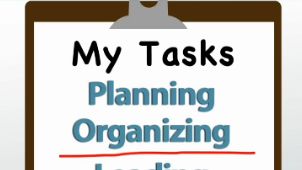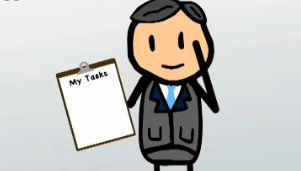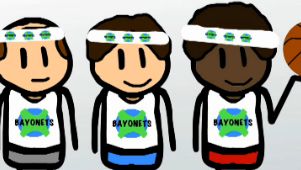Organizing as a Function of Management - Quiz
Choose your answer and write the correct one down. Then click HERE for the answers to this quiz.
NOTE: The transcript from the video is listed below the quiz for your reference.
1. Which managerial function is used by a manager to determine how they will distribute resources and organize employees according to a plan?
- leading
- organizing
- planning
- controlling
- staffing
2. Which of these is necessary to be place before the organizing function can be carried out?
- a strategy
- a schedule
- a plan
- a chain of command
- a goal
3. Which of these is completed as part of the organizing function?
- delegate authority
- inspire employees
- hire new employees
- evaluate results of a carried out plan against goals
- create a detailed action plan aimed at some organizational goal
4. Which of these is the end result of the organizing process?
- the organizational hierarchy
- the organizational chart
- the organizational plan
- the organizational outline
- the organizational structure
5. Which of these is not completed as part of the organizing function?
- determine how decisions are made
- determine roles and responsibilities
- inspire employees
- determine how information is distributed
- assign work
Once a plan is in place, a manager must put it into action. This lesson explains the role of organizing as a function of management as well as its relationship with planning.
Organizing as a Function of Management
The major functions that a manager completes can be categorized into four different functions, known as planning, organizing, leading, and controlling; a fifth function of staffing also appears in some management literature. This lesson will focus on the second managerial function, known as organizing. The organizing function is carried out once a plan, or an outline for how to achieve some organizational goal, is in place. Many believe organizing is the most critical of managerial functions because of its ability to help or hinder an organizational plan and thus profoundly affect organizational success.
 |
What Happens When a Manager Organizes?
Organizing, much like planning, is a process that must be meticulously designed and executed. The end result of the organizing process is the organizational structure, which refers to the type of framework a company uses to distinguish power and authority, roles and responsibilities, and the manner in which information flows through the organization. Having a suitable organizational structure will allow a company to implement proper operating procedures and decision-making processes that will aid the organization in accomplishing its goals.
 |
In addition to providing structure for work processes and employee roles and responsibilities, organizing also determines how decisions will be made, how information is distributed, and how the organization will respond to problems. The organizational structure should define the formal reporting relationships, chain of command, decision responsibility, span of managerial control, and method of communication. During the organizing process the manager will also need to delegate authority and provide direction so that subordinates can work towards the plan without having barriers in their way.
 |
Lesson Summary
Let's review. There are four functions of management, which include: planning, organizing, leading, and controlling; a fifth function of staffing also appears in some management literature. This lesson focused on the second managerial function of organizing that is carried out once a plan is in place.
Organizing involves the manager determining how to distribute resources and arrange employees according to the plan. The manager will need to identify different roles, delegate authority, assign work, and provide direction so that subordinates can work towards the plan without having barriers in their way. Organizing also determines how decisions will be made, how information is distributed, and how the organization will respond to problems.
The end result of the organizing process is the organizational structure, which refers to the type of framework a company uses to distinguish power and authority, roles and responsibilities, and the manner in which information flows through the organization. Having a suitable organizational structure will allow a company to implement proper operating procedures and decision-making processes that will aid the organization in accomplishing its goals.